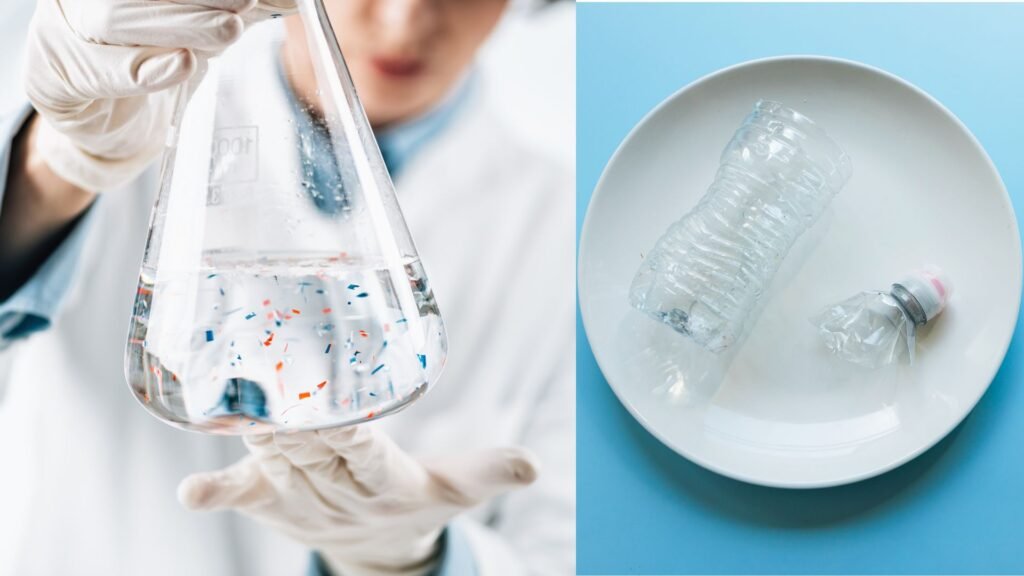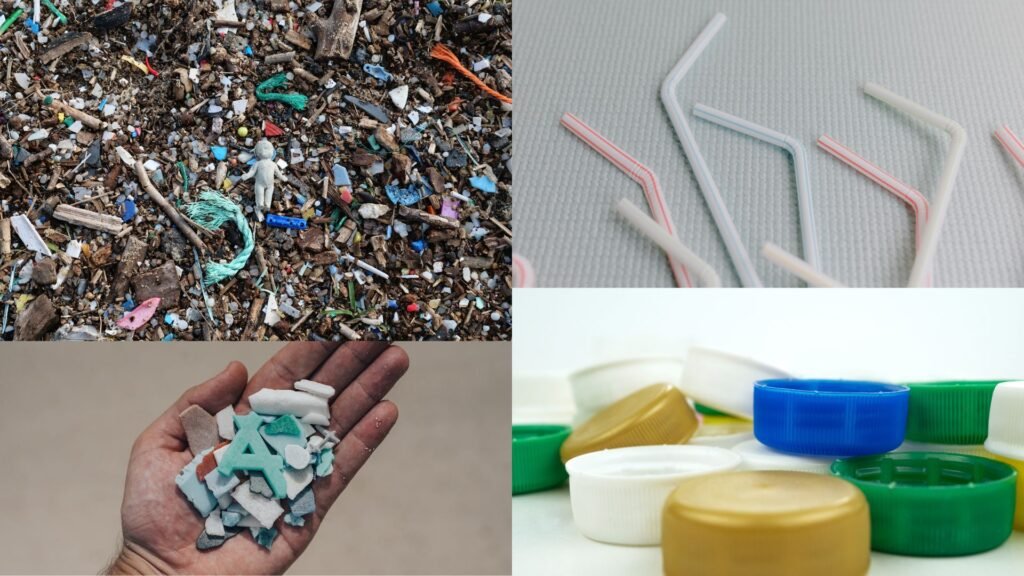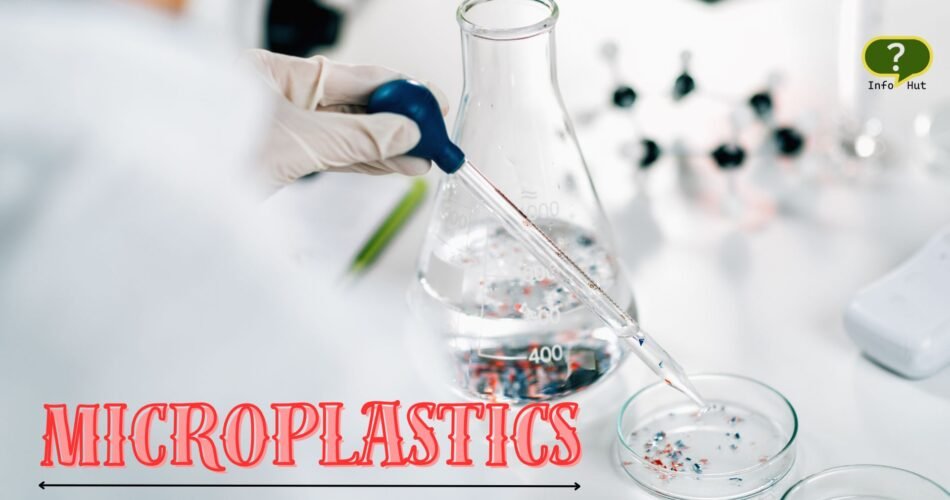This blog contains complete Information about Types, Impacts and Solutions of Microplastics. It also elaborates its sources, measurement, detection challenges and effects on Ecosystem and Human Health. This also explains the Economic and Environmental consequences of Microplastics. In the end, it tells about the Mitigation Measures and Call to action on Microplastics.
What is the definition of Micro-plastics?
Micro-plastics are the small particles less than 5 millimeters that comes when the Plastic is degraded. These are harmful for health of Humans and other Biodiversity.
In recent years, the microplastics have developed as one of the most dangerous concerns in the Environmental and Health field. These small pieces of plastic, often unseen to the bare eye, are shorter than 5 millimeters in size but have huge consequences for living systems, health of humans, and for the overall environment. They are penetrating, long-lasting, and risky, causing the occurrence of challenges that require emergency attention and response.
Micro-plastics are newly evolving health risk that is a significant segment of Plastic Pollution. Human population and animals are facing equal drawbacks of the Micro-plastics. They are causing many bad impacts on Health of Biodiversity and also the Environment. These Micro-plastics have entered into every ecosystem whether it is water, land, or any part of the environment. It is polluting Oceans, Agricultural land, Plants, vegetation and even the Air we breathe. We can say that we Eat, Drink and Breathe Plastic. This blogs is all about Types, Impacts and Solutions for micro-plastics.
How microplastics are measured?
Following are the steps to measure Microplastics within a sample:
- At first, we take proper sample from the environment according to the sampling techniques.
- Then we separate the plastics from other materials within the sample.
- Third step is the characterization of those particles according to their sizes and properties. We can use Fourier Transform Infrared Spectroscopy FTIR or Gas Chromatography Mass Spectrometry (py-GC/MS).
By following these steps Microplastics are measured in a sample.
What are the Detection Challenges for Microplastics?
The minimum size of microplastics that can be measured is 1 to 4 μm approximately. There are many challenges in detecting Microplastics. Some of those are as follows:
Particle Characterization
The microplastics have a wide range of sizes and structures so they are difficult to characterize.
Natural vs Plastic Origin
Many natural materials resemble plastic origin so it is difficult to detect microplastics among other materials.
Complex Sample Matrix
Microplastics are often found in complex sample matrix that are difficult to standardize and separate.
High Cost and Time
The equipment and methods that can detect them easily are either costly or time consuming.
Underestimation
Most of the time the detection of microplastics is underestimated and eventually the results are inaccurate.
These are some of the challenges during the detection of Microplastics from any environmental sample. Many other complications can also occur during this process. This blog contains Types, Impacts and Impacts of Microplastics.

Sources of Microplastics:
There are many significant sources of Microplastics that cause these particles to enter living systems and human body. Following are some of those:
- Synthetic Textile
- Tire wear
- Road Dust sources
- Marine Coating
- Fertilizers etc.
Types of Microplastics:
Microplastics are serious pollutants for Air, water and soil in our Ecosystem. Microplastics are categorized into two types based on their origin. These two types are explained as follows:
Primary Microplastics:
These are manufactured intentionally for specific uses. Microbeads, mostly present in exfoliating essences, toothpaste, and facial scrubs, are common examples. Moreover, small beads, the small nurdles used in making of plastics, are also a huge source. These particles reach wastewater treatment systems due to their small size, directly enters in water water reservoirs and aquatic life.
Secondary Microplastics:
Microplastics generates from the decomposition of huge things made of plastic such as bottles, bags, and fishing equipment. Elements like UV radiation, mechanical erosion and living activity degrades these plastics simpler particles with time. Secondary microplastics are more widespread, so making them difficult to tackle.
Accumulation of these in the surroundings is driven by water currents, winds and human activities, which transfer them to even the more faraway locations, such as deep ocean floor and Arctic Ice. In this way they transfer from one Type of the Environment to the other. This blog contains information about Types, Impacts and Solutions for Microplastics.
How Microplastics Effect the Ecosystems?
Microplastics have been detected across diverse ecosystems, disrupting ecological balance in multiple ways:
Effects of Microplastics on Marine Ecosystems:
Oceans are the consumers of biggest portion of plastic pollution that makes it heavily contaminated. All the marine organisms from the unicellular animals to the largest mammals ingest microplastics everyday. At present, many studies have proved that the fishes that are open microplastics show less growth, disturbed reproduction. These increase their mortality rates. With that, these tiny particles prove as the direction for various pollutants like heavy metals and chemicals that attach to their surfaces. These particles then enter into the food chain and transfer these to the higher levels and reach to the humans.
Effects of Microplastics Terrestrial Ecosystems:
Microplastics in fertile soils comes from wastewater sludge, plastic mulch, and atmospheric downfall. They change the structure of soil, reduce microbial variety, and reduces water holding, effects productivity of crop. With time, microplastics adds in the food chain, polluting fruits, vegetables, and livestock.
Effects of Microplastics on Freshwater and Urban Ecosystems:
Rivers and lakes act as conduits, transferring microplastics from land to seas. Urban areas contribute significantly through runoff from roads, synthetic textiles, and tire wear particles.
Lakes and rivers are as channels, that transfer microplastic from the land to seas. Urban lands takes part in runoff from the roads, synthetic chemicals and tire wear particles. This mostly happens in urban areas because there is a huge consumption of Plastic products and goods and these are near the water resources and Biodiversity Ecosystems.
Effects of Microplastics on Atmospheric Impact:
Microplastics in the air that originates from industrial pollution, road dust, and synthetic fabrics. These are inhaled by all living things alike. At the end, they eventually settle and contaminate soil and water systems faraway from their source. This contributes in deteriorating of the Air Quality at a great level and it is one of the significant sources of Air Pollution.
These are the effects of Microplastics on different Ecosystems. As we can see that Microplastics are dangerous for living organisms in every ecosystem. With the effects on the Environment and Natural Systems, it also cast bad impacts on health of Humans and Biodiversity.
What are the routes of human exposure to Microplastics?
The invasion of microplastics into human life poses significant health risks, many of which are still under investigation. Following are the routes of human exposure to microplastics:
How we Inhale Microplastics?
Moreover, artificial fibers from carpets and clothes release these particles into the air increase inhalation risks particularly in urban areas. Millions of microplastics are inhaled every day with air and dust particles that results in respiratory disorders.
How we Ingest Microplastics?
Many microplastics have been found in the water we drink, in salt and seafood we eat and even beer. People consume about 50,000 microplastics through food and beverages every year. This cast a long-term impact of chronic disorders in humans around the world.
Skin contact risks of Microplastics
Microplastics can cross biological barriers including walls of intestine and blood-brain barrier when entered into the body. The physical presence of these particles can cause tissue damage, inflammation and oxidative stress in the body. Furthermore, these carries toxic elements including dioxins which disturb endocrine functions. These may also increase risk of diseases such as Cancer and Diabetes.
This blog contains Types, Impacts and Solutions to Microplastics.
Health Impacts of Microplastics:
Following are the most common health effects of microplastics:
Respiratory Disorder
Microplastics are a big cause of respiratory disorders in humans and animals. They are added into the air and dust and enter in the respiratory tract of living organism. These particles can be a great cause of Asthma, Tuberculosis, Sinus and many other such respiratory disorders in humans and animals exposed to it.
Reproductive Health
Long-term and excessive exposure to microplastics have proved to be extremely dangerous for the reproductive system of living species. In extreme cases it can cause abnormal births, premature births and infertility in humans. It can be extremely dangerous for the reproductive organs either through inhalation and ingestion.
Neurological risks
In recent studies, scientists have came to know the fact that microplastics can reach our brain. They can disrupt our neurological system that can cause neurological disorders in living things. These disorders include Cognitive impairment, Alzheimer’s disorder, Parkinson’s disorder and also many other such disorders harming our nervous system.
Cardiovascular Disorders
Microplastics can also be a significant cause of Cardiovascular conditions in humans. They can enter in your bloodstream and contaminate the blood. These particles can make blood clots in the blood vessels and end up as Heart Attack and Cardiac Arrest. In extreme cases these can cause Cardiac dysfunction and can also be fatal to humans.
These effects shows that Microplastics are exposed to humans and other Biodiversity in different ways. Each exposure cause many health impacts on living things. This blog is all about Types, Impacts and Solutions of Microplastics.
Economic and Environmental Consequences of Microplastics
Following are some of the economic and environmental consequences or impacts of Microplastics:
Fishing and Aquaculture:
Polluted waters cause a decline in fish quality and population, that affects the lifestyles of millions of aquatic animals worldwide. This really effects the Economy and restricts ways of income for the Public.
Tourism:
Messy beaches and water bodies deter tourists, reducing revenue for coastal communities. In the condition of Plastic Pollution, tourists avoid to visit those places again in their lives.
Waste Management Costs:
Tackling microplastics as waste is technically challenging and is also demanding financially. As these are difficult to restrict over an area because they are tiny and are widely dispersed. This is very costly to make a place plastic free.
Environmental consequences are equally dire. Microplastics exists for centuries, disturbing the normal functioning of ecosystems, causing decline in biodiversity, and changing of the natural functioning of habitats. This is cancer for the Earth’s Natural Systems and so the Life of living organisms or Biodiversity on Earth.
Mitigation and Solutions
Addressing the microplastic crisis requires global cooperation and innovation:
Avoid Plastics and promote Biodegradable alternatives:
Promote reusable options, ban single-use plastics, and replace them with biodegradable materials can help to reduce plastic waste in the environment. The reduction of Plastic Products manufacturing will help to reduce Plastic Pollution and that eventually reduce the existence of Microplastics in the surroundings.
Regulations and Industry Standards:
Various countries have restricted the use of microbeads in the cosmetics industry, but we need further replacements. We should reduce plastic production with strict regulations. Better management systems and international treaties should be considered necessary in this case. The reduction of microplastics is difficult without relatable laws and their implementation.
Wastewater Plants Advancement:
Upcoming technologies such as capturing of microplastics through filters in robots that cleans the ocean and nanotechnology-based remediation can be promising for this problem. The enzymes that can break down plastics are also under research. Technology can be very useful in fighting Plastic Pollution.
Filtering Micro-fibers in Washing Machines:
Many microplastics attach with our clothes and they eventually cause different diseases and disorders in humans. One of the solution to reduce the contact with microplastics or microfibers is to attach a Microfiber filter with our washing machine. This will detach all the micro-particles from your clothes and also keep you healthy and away from microplastics.
Public Awareness:
Spreading awareness in the communities about the negative impacts of microplastic can cause behavioral change. Workshops and Campaigns to reduce the use of plastic, efficient disposal and the prominent participation of people in clean-up programs are very important. People can work collectively for the reducing of plastics in their environment.
This blog is all about Types, Impacts and Solutions of Microplastics.
Call to Action
Microplastics are tiny particles but are significant in proving the unsustainability of plastic. Even at present, we are unable to understand and mitigate the full impacts of these particles. While the prominent evidences explain us that plastic is pervasive and long-lasting on Earth. In order to deal with this transparent danger the people, industries and governments should participate together in reducing Plastic Pollution. We should also work on improving Waste Management and develop Sustainable Solutions to get over this environmental hazard.
The time to act is now. Through collective effort, we can mitigate the microplastic crisis and preserve the health of our planet and future generations.

Conclusion
Microplastics shows up as dominating and invisible hazard with further impacts on the ecosystems, humans health and environment. These particles disturb terrestrial and marine habitats and enters into the food and water supply. The main issue is knowing the root causes of this environmental problem that leads to widespread impacts. By reducing Plastic dependency, advancing technology in this field, implementation of strict laws and policies, and also by increasing global awareness are the solutions to this global issue. Collaborative steps can help us to ensure a healthier and sustainable future for upcoming generations.
To learn about more topics, Click the links below:


Comments